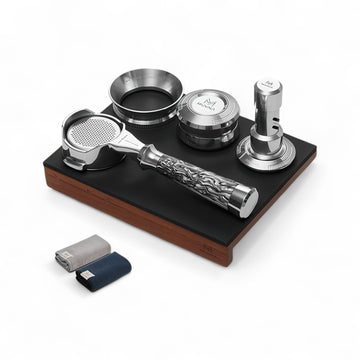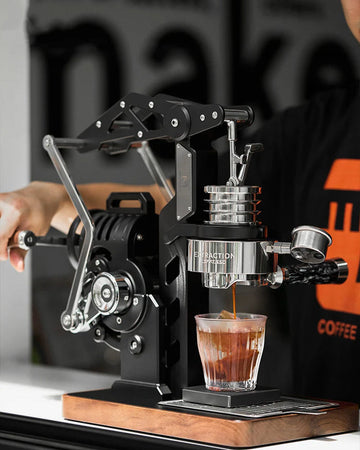Making the right coffee at your home is taking an extra few steps such as using the proper temperature water, weighing coffee without measuring by volume, and grinding your coffee beans.
Why do coffee grind sizes matter?
Coffee grind sizes matter because they directly impact the flavor and extraction of the coffee. Talking about the coffee grind size, there are 3 factors which make the largest difference – contact time, extraction and flow rate. The extraction rate of coffee grounds expands in a bigger surface.
- To spread the surface area, you could grind the coffee finer
- The higher the extraction rate, the less contact time is vital
- A finer grind might decrease the flow rate of water and boosting the contact time at the same time
If you use a brew method and a short contact time, the grind could be finer. In a captivation brewer, which causes coffee grounds in water for a few minutes. The contact time is much higher and it requires coarser grind than other brewing methods.
In case the contact time is too high or the grind is too fine, it will lead to an over-extracted brew and the coffee cup could be bitter. If the grind is too coarse or the contact time is so short, the coffee shot will be weak.
Finding the balance between the two will assist in generating the most tremendous cup of coffee. Distinctive kinds of filters, pressure, and temperature might play a crucial part in producing grind size, but most brewing methods get from 195 to 205 degrees Fahrenheit (ranging between 90.6 and 96.1 degrees Celsius) without added pressure.
Why does coffee grinding impact your cups?
Many of us pick coffee already ground coffee because it is convenient and speedy. It is also fine for the bulk of coffee drinkers. For those who want to try different coffee experiences, grinding coffee beans is the next step to making the true cup of joe. Grinding your coffee might help you to monitor the size of coffee grounds, taste, and aroma. You cannot achieve these with coffee grounds and pre-ground products.
What type of coffee grind is right for you?
Have you ever had to find out which kind of coffee ground is the proper one for you? With several types of coffee maker and apparatus available with a whole variety of different coffee grinds to select, the guide will support you to find the answer.
French Press (coarse grind)
To brew the French press, you will need to use a coarse grind in coffee beans. A coarse ground will look hard. Because the coffee is deep in boiling water, the contact time (between the water and coffee) is longer and requires a coarser grind. Grinding the coffee too coarse will cause the weak coffee. Grinding too fine will make the coffee murky and bitter.
Pour over (medium-coarse grind)
The most suitable grind is a medium-coarse grind. A medium-coarse grind will be akin in size to a French Press grind but it is less harsh and a little smooth. If you use a cone-shaped pour over, then you could select a medium-coarse grind instead.
Because there are several different pour over brewers, each one will need a gently different grind. You might need to try a little more with the method till you seek what tastes for you. Please keep in mind that the less time the water is swap with the coffee grind, the finer the grind might be.
Siphon coffee (medium)
The coffee requires a medium grind size from filter to Espresso (but closer to the filter size). Siphon coffee machines usually crave a cloth or metal filter, making a full-bodied and clean cup. The grind will not be clogged in the filter if they are not too fine. If the coffee grounds are too big, flavor will be lacking as it is a rapid brewing process.
Espresso (fine grind)
For making Espresso, you should use a fine coffee grind. A fine grind will be identical in size and feel to that of sugar. Moreover, it could be somewhat coarser than a grind used for a regular Espresso shot.
Fine grinds are necessary due to the short brew time that the coffee grind comes in with water. When brewing Espresso, pressure creates the Espresso and forcing the water goes through the fine coffee grounds.
If you use a coarse grind, the water could not extract the flavor from the coffee beans. For this reason, Espresso is the most attractive of coffee kinds when brewing delicious coffee shots and the size of the coffee beans.
If the grind is marginally finer or coarser, it could acutely impact the extracted taste of Espresso. This is the reason you have to use fine coffee grinds when brewing Espresso in a coffee machine (Espresso or Moka pot).
Turkish coffee (extra-fine grind)
Turkish coffee is generally strong coffee with fine grinds. There is no doubt that it requires an additional fine coffee grind. The coffee grinds should simulate powdered sugar, making it finer than what is used in Espresso. Because Turkish coffee requires fine grounds, some grinders could not do it. When you are finding a coffee grinder, ensure that you set the right thing in order to make Turkish coffee.
Cold brew (extra-coarse grind)
To enjoy your cold brew cups, you should use an extra coarse grind. An ice-cool cold brew coffee is wonderful and full of pleasant flavors. Unless you use the wrong grind size, you cannot find a similar taste.
Many of us often miss it: using a finer or a coarser grind if you change the steep time. The longer you dive, the coarser you grind. However, you should not go finer than a medium to a cold brew shot.
Aero Press (between medium and fine)
Aero Press is a widespread brewing drink and it is similar to French Press. Relying on steep time, the grind size is from medium to fine.
Drip coffee (between medium-coarse and medium)
Drip coffee is what you can find in a café or a coffee shop. It is usually made in big batches and contact time is created by a small hole (in the bottom of a brewing basket). Thus, the grind size is diverse, from medium-coarse to medium.
Final words
All of the different coffee grinds are recommendations. Based on your preferences and differences in brewers, they tend to adjust. Getting the right grind size always requires testing and tweaking. If you feel the coffee is tad and weak, for example, then you could put a slightly finer grind size. Or if your coffee is strong or bitter, you can go with a large size to check.













